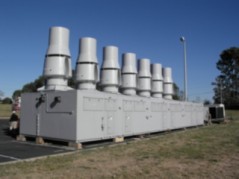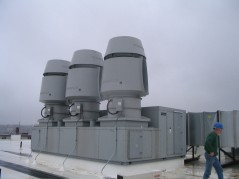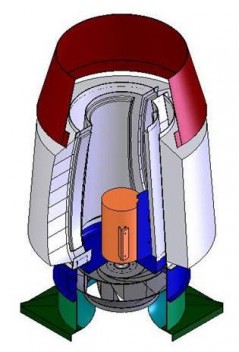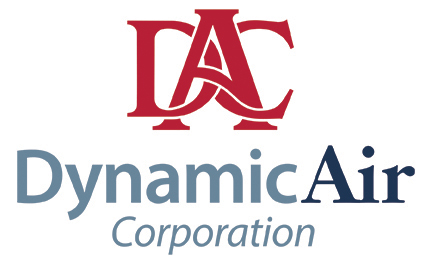There are three key design questions that we ask when designing every High Plume Dilution Fan application. They are the basic questions that determine every design choice down the line. They will be asked at some point, so better to deal with them early in the design process.
Q. Is there redundancy required in the system?

A greater percentage of High Plume Dilution Fan Systems (Lab Fume Hood Exhaust Fan Systems) are now manifolded systems; there are more than one fan mounted on a plenum-mixing box. For these systems it is essential to figure out how much, if any, redundancy is required. We build redundancy into systems as a backup. Typically we look to make sure we are covered in the event of a fan failure. If one fan fails, will the system be able to cover the exhaust load?
Many times we just say make redundancy x1, meaning an additional backup fan is included. If one fan fails then it is backed up by 100%. This is the safest plan but it is also the most expensive. We don’t typically recommend it.
- We take a close look at every application. Is it a multimillion dollar process that cannot afford to go down or is a high school lab fume hood that’s not even used 24/7? It’s key to consider the application first.
- Then it’s worthwhile to ask the question whether the users could get by with a lower percentage of exhaust flow for a short period of time. In most lab applications this is the case. They run VAV systems and can afford to run the system at 75% of full capacity for the time it takes to fix a fan or replace a motor. This is our typical recommendation.
- Then it’s key to remember that good quality fans don’t fail very often. If you are working with high quality equipment, like direct drive Tri-Stack Fans from Strobic Air, then you may not need the redundancy. The motors on these fans are rated for 22 years of operation and very rarely fail. Better to use the money in another part of the project and put in vibration sensing on the fans to provide an early failure warning.
- Lastly the million dollar question; can the application afford the cost for the additional redundancy. If not, it’s better to consider less redundancy or none at all.
Q. Is there energy recovery included in the design?

In many areas, like Massachusetts, energy recovery is now mandated for many applications that typically use High Plume Dilution Fans. If it’s not mandated then it should be considered. It should be considered early on in the project. Not at the end when no one wants to make any changes.
Look at the application and determine a payback for the type of energy recovery that is being considered. It does not make sense to use energy recovery on applications that do not support a payback (like very small applications or applications with extremely dangerous exhaust). Most of the applications we see with High Plume Dilution Fans do support a payback and it’s usually less than 4 to 5 years.
This is a key question to ask and explore right up front.
Q. Will sound attenuation be required for the application?

Once again it is important to look at the type of application and the proximity to neighbors. If it’s a big industrial park and the building is miles from neighbors then we don’t look to incorporate sound attenuation. If the building is on a quiet campus and could impact other areas then it’s definitely considered.
There are several areas, like Cambridge, MA, where sound attenuation is fairly typical for these types of fans. Cambridge has one of the more strict thresholds for noise. They look to 50 dbA at the property line, which is the sound level of a typical home. That’s pretty quiet.
Keep in mind three things with respect to sound attenuation.
- Most sound is emitted from the fan upwards. If the building that the fan on is the tallest in the area then typically sound attenuation is not as important.
- If the High Plume Dilution Fans are run on VFDs, like most are these days, then the sound at the reduced, operating RPM should be considered for the application.
- Make sure that sound attenuation, if used, is also incorporated on bypass dampers also. In many cases these can be the biggest sources of noise from the system.
Redundancy, heat recovery and sound attenuation all cost additional dollars. It is important to consider them early on and to justify the additional cost.





Leave a Reply